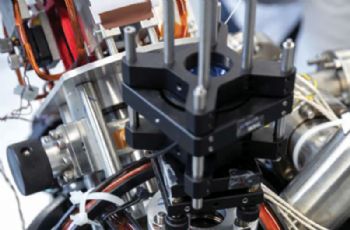
The UK’s first commercially viable quantum accelerometer, which has the potential to revolutionalise navigation, has been developed by a team from Imperial College London (
www.imperial.ac.uk) and Glasgow-based M Squared (
www.m2lasers.com).
Most navigation systems today rely on a global navigation satellite system (GNSS), such as GPS, which involves satellites orbiting the Earth.
The quantum accelerometer is a self-contained system that does not rely on any external signals.
This is particularly important because satellite signals can be blocked by tall buildings, and can be jammed, imitated or denied — preventing accurate navigation.
One day of denial of the satellite service would cost the UK £1 billion.
Accelerometers measure how an object’s velocity changes over time. From this, and the starting point of the object, its new position can be calculated.
Accelerometers have existed for some time, and they are present today in technologies like mobile phones and lap-tops. However, they cannot maintain their accuracy over longer periods without an external reference.
The quantum accelerometer relies on the precision and accuracy made possible by the properties of supercool atoms.
At extremely low temperatures, the atoms behave in a ‘quantum’ way, acting like both matter and waves.
Joseph Cotter, of the Centre for Cold Matter at Imperial College London, said: “When the atoms are ultra-cold, we have to use quantum mechanics to describe how they move, and this allows us to make what we call an atom inter-ferometer.”